Ancient Chinese Geometry
by jensilvermath • June 4, 2016 • Math • 1 Comment
Note: This is a re-post from 2013, dedicated to Dr. Golden’s students!
Liu Hui was a 3rd century Chinese mathematician. I first stumbled upon him when I saw puzzles based on dissection proofs of the Pythagorean Theorem (Shang Gao Theorem (商高定理)) at ICME11 in 2004. Recently I’ve been exploring the trisection of a cube, so I could give students a way to discover the formula for the volume of a pyramid or cone. After recreating the correct pyramids myself – which took an embarrassingly long time and involved floral foam, lucite boxes, ribbon, and my Dremel tool – I came upon the image on the right.
It took a while for me to visualize the relationships between the faces of what I’m calling Liu Hui’s solids, but with grit and GeoGebra, I got it done. Excited doesn’t begin to describe how I felt when I finished and built the nets! They hold amazing properties, which I could describe, but instead will leave for you to discover. If you are not up to the task of recreating them for yourself, I have included a link to the nets and a list of resources to make pretty ones that stick together with magnets!
Check out this post for nets and directions.
P.S. I think we as Western educators, would do well to study the contributions of Eastern scholars, like Liu Hui.

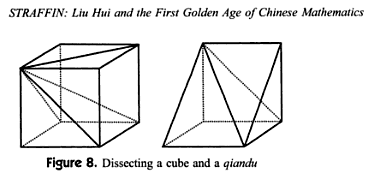
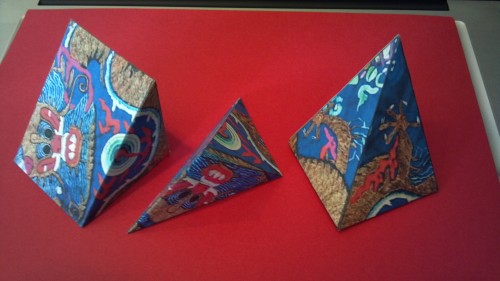
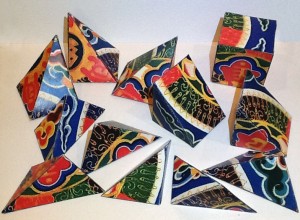
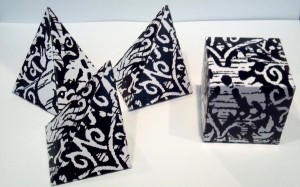
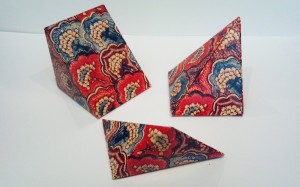
One Response to Ancient Chinese Geometry